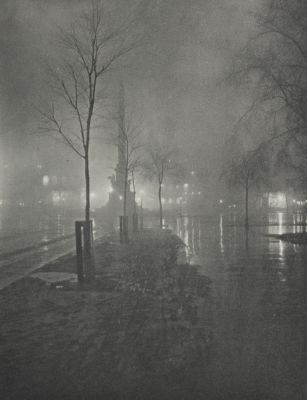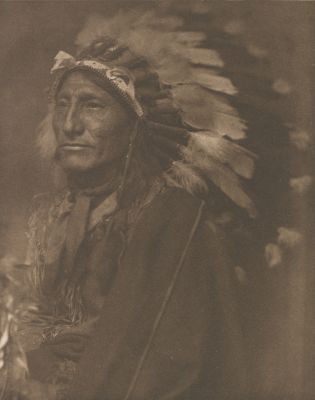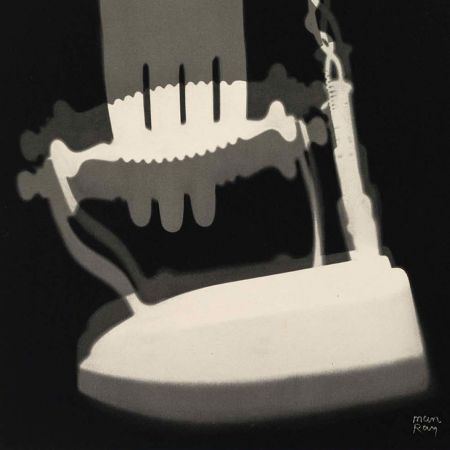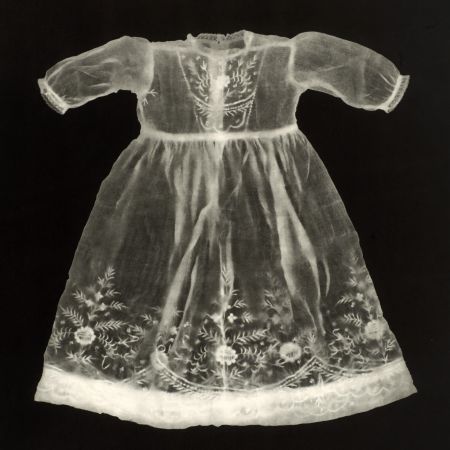Camera Notes
In the case of the photogravures the utmost care will be exercised to publish nothing but what is the development of an organic idea, the evolution of an inward principle; a picture rather than a photograph.
Alfred Stieglitz (1864–1946) radically thought of the photogravures of Camera Notes as works of art. Such a notion suggested that the photomechanical process, typically used for making reproductions, could also be utilized for more exalted purposes. Stieglitz was intrigued with this idea, and pursued it as a corollary to his crusade for photography as an art form.

William Fraser A Wet Night, Columbus Circle, New York Camera Notes Vol. 2 No. 3, 1899

Gertrude Kasebier Indian Chief Camera Notes Vol. 6 No. 1, 1902
Stieglitz commenced Camera Notes pledging to include two full-page photogravures per issue, but, within a year and a half, he was able to double that number. Separated from the text pages by the weight of the page, their blank backs, and a tissue guard, these illustrations functioned as a mini-gallery of beautiful images for the reader. Peeling back the gravure’s protective tissue, one could contemplate a gem of artistic photography, chosen personally by Stieglitz.
Just as artistic personality was essential to photography as an art, the hands-on involvement of photographers helped impart higher standing upon the photogravures of Camera Notes. Most commonly, photographers provided Stieglitz with their original negatives that were necessary for generating the printing plate. In addition, the artists were frequently sent proofs of their images before Stieglitz gave approval for the final printing of the entire edition. Involving the creators in this manner was a time-consuming and involved process for Stieglitz, but it resulted in photographers who were pleased with their illustrations and readers who lauded the excellence achieved.
Walter L. Colls provided the photogravures for most of the images by European photographers, while New York's Photochrome Engraving Company, where Stieglitz himself had learned the process, supplied all the gravures by Americans. The only other firm to print photogravures for Camera Notes was T. & R. Annan and Sons, of Glasgow, where, by no coincidence, the photographer James Craig Annan was a partner. Annan and Stieglitz were exact contemporaries, sharing interests in fine photography and fine printing. Stieglitz personally collected Annan's work in great depth and Annan provided photogravures by George Davison as well as his own for Camera Notes. Annan etched his own copper plates, proofed them, and oversaw the printing of his editions. Among all the photographers whose work was included in the journal, Annan was unique in this regard.
From its inception in 1897, Camera Notes ushered in a new century and an entirely different attitude toward photography, arguing that photography deserved a place among the fine arts—a concept as challenging to the general public as it was to most painters and sculptors. Taken as a whole, the 24 issues of Camera Notes comprise America’s first convincing testament to this concept.
Achieving parity between photogravures and original photographs was a great achievement for Stieglitz and a substantial coup for Camera Notes. It meant that the crusade to have photography accepted as a fine art was gathering momentum and offered hope that continued vigilance, in words and in images, would pay off.
We are grateful to have a complete set of photogravures that appeared in Camera Notes in this collection.
References
The content of this page has been adapted from:
The Photogravure Process and Precedents for Camera Notes by Christian Peterson





